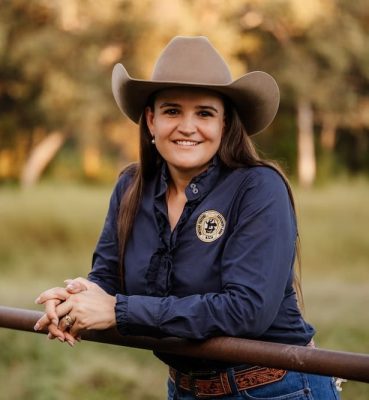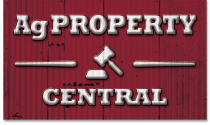WITH the Northern Territory entering its second season of cotton ginning, it begs the question could it stimulate the sale of some suitable properties for producers interested in growing cotton?
Cotton is perfectly suited to Territory conditions, according to the NT Farmers, because it requires relatively little water and is resistant to many pests.
Unlike the Murray-Darling Basin region in south-eastern Australia, where cotton is grown as a standalone enterprise, cotton in the NT is a complementary crop typically grown alongside cattle production.
“While both irrigated and dryland cotton are grown in the Top End, the vast majority of cotton is grown under dryland or rain-fed conditions – planted during the wet season and harvested in the middle of the year,” said the NT Farmers.
“Irrigated cotton is extremely water efficient and can only be irrigated if a farmer has a water licence to extract a limited amount of water from underground aquifers.”
Earlier this week, plans to expand irrigated cotton production in the NT gained momentum, with Larrimah Farms securing approval for a water licence to extract 10,000ML a year and another project seeking a boost to its allocation.
Cottonseed good fit for NT
According to the NT Government, cottonseed is an important by-product of the ginning process.
“For every tonne of lint, more than one tonne of cotton seed is produced,” it states.
“Cottonseed is high in energy, protein and fibre and is fed to cattle as a supplement or as an ingredient in feedlot rotations.”
It said cottonseed as a feed supplement has been successfully used in Australia for many years and has particular benefits during drought conditions.
“Therefore, an increase in cotton production in the NT will provide significant opportunities using cotton seed to finish cattle at the time of year when supplementary feeding is most required.”
Property implications
Interestingly, a number of real estate agents told Grain Central demand for cotton country has not been a driver.
They report fodder production is trumping cotton in the wake of dry conditions across parts of New South Wales, Victoria, and South Australia.
With optimal growing conditions in the NT, it appears fodder has become lucrative for many producers.
According to the Australian Fodder Industry Association’s latest hay report, there is high demand with little available on the market.
In SA, the price of hay jumped $100 per tonne in the last week to $400-$500/t, with reports that some NT producers have been approached by desperate farmers willing to pay up to $800/t to feed their weaners or keep their stock alive.
Last week, Elders agent Mike Lind heard that hay prices in SA’s South East were commanding $550-$600/t.
He said many larger operators have spent more than $2 million feeding their cattle over the past two to three months.
“These producers haven’t had the option of destocking because livestock have been heavily pregnant, or they have had young at foot,” Mr Lind said.
“Also, many who have held their lines for generations aren’t prepared to let them go.”
There is no doubt, properties growing irrigated cotton attract more interest than those growing dryland cotton – in other words, holdings that have existing infrastructure such as bores, pipes, and centre pivots, and offer access to water.
While they might prove more expensive, irrigation removes the vagaries of rainfall which ultimately impact yields.
For instance, some years there can be too much rainfall, and in other times there is not enough or there might be a slow or a wet finish.
A number of freehold properties with cotton-growing potential are currently listed for sale around Katherine. They include:
- 2970ha Victoria Downs;
- 2027ha Kingfisher Station;
- 5340ha Rocktear Park;
- 3437ha Granite Creek; and,
- 12,956ha Edith Springs and Tarwoo Stations.
Sue Brosnan, Katherine Cotton Gin
Project coordinator Sue Brosnan believes the cotton industry will have a big impact on how people in the NT feed their cattle.
“The ability to feed cattle out of season may change how people view markets for northern cattle.”
Ms Brosnan said the NT was a huge learning curve for new investors, both domestic and international.
“Purchasers need to learn about the environment – not only the operating environment, but the actual environment such as markets, climate and the way we do business up here.”
Ms Brosnan believes overseas investors involved in livestock and cropping will have the confidence to invest.
“South Americans currently growing cotton and who are looking at the NT, will be quite familiar with this type of environment and should find it an attractive investment.”
Ms Brosnan believes it is better to have more than one string to your bow.
“What a bonus to have a pastoral lease that offers an ability to crop, such as cotton because the by-product, cotton seed, is a good protein source for cattle.”
So, will locally sourced cotton seed provide a cost saving for NT producers?
Only time will tell.
Ms Brosnan said some producers have already jumped on board because they can see the benefit of feeding cattle whole cottonseed.
“The market will determine price for cotton seed, like it does with cattle, and the cotton gin is happy to sell to anyone – for as many tonnes as producers require.”
Ms Brosnan said currently, producers spend millions of dollars a year looking after their cattle.
“Territorians are very good at supplementing cattle to address protein deficiency in the dry season and phosphorus deficiency in the wet season.
“There is a variety of available options including feed blocks, loose licks or medicated water.”
“Going forward, some supplementation will still be required but feeding cattle whole cotton seed will help alleviate the protein drought experienced every year.”
This year, the Katherine Gin took the opportunity to export a large volume of cottonseed, mainly to China, but it is understood the business is keen to sell locally to avoid warehousing.
Ms Brosnan said like any venture in the north of Australia, producers need to educate themselves on the dos and the don’ts, but cotton seed is very palatable.
“Several years ago, I was involved in a trial that fed whole cotton seed to early weaners (after we got their rumens going with supplement and pellets) and they did extremely well.
“It is also a good source of protein for older cattle, particularly maintaining body weight for breeding cows.”
Last month, a desktop study into gross margins indicated break even targets for supplementary feeding of cottonseed to weaners and heifers in the NT.
Romy Carey, NTCA
Northern Territory Cattlemen’s Association chief executive officer Romy Carey said the establishment of a local cotton gin has created an emerging opportunity for the NT cattle industry.
“Cottonseed is already being used by some producers as a protein supplement during the dry season. Access to a locally produced input reduces freight costs and supports more consistent, timely nutrition across extensive grazing systems,” Ms Carey said.

NTCA CEO Romy Carey.
Ms Carey said while cottonseed doesn’t change the primary market destination for northern cattle, it can help producers turn off stock sooner by improving weight gain and maintaining condition through the dry.
“This added flexibility allows producers to better align with market windows without relying solely on seasonal pasture growth.”
Ms Carey said cottonseed is proving to be a cost-effective supplement, particularly for those located near ginning operations.
“It helps maintain growth rates through seasonal feed gaps, supporting earlier turn-off and greater overall efficiency without significantly increasing input costs.”
Ms Carey said access to locally sourced cottonseed during the dry season may offer producers greater flexibility in how and when they finish cattle.
“While live export remains the primary market, improved nutrition and the ability to feed out of season could allow some producers to explore market options that may not have been viable previously.”
Grain Central: Get our free news straight to your inbox – Click here

HAVE YOUR SAY